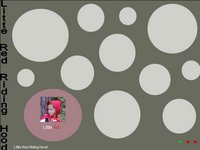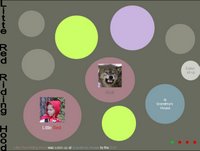Virtual Communities at OCAD
This is a blog for Art & Design Students in Virtual Communities
Tuesday, December 12, 2006
Saturday, December 09, 2006
Light to Unite
 Follow the link to light a candle.
Follow the link to light a candle.Bristol-Myers Squibb is donating a dollar to fight AIDS every time someone goes to their website and moves the match to the candle and lights it. This site is functional and well designed, and contains memories and stories from AIDS health care workers, family, friends and survivors.
Tuesday, December 05, 2006
Thursday, November 30, 2006
FINAL ASSIGNMENT DESCRIPTION - DUE DECEMBER 12 - FINAL CRITIQUE DAY
Virtual Communities ASSIGNMENT - warmware : an assistive memory project
DUE DECEMBER 12 - FINAL CRITIQUE DAY
description by Judith Doyle : jdoyle@faculty.ocad.ca
For this assignment, you will adapt your "non-linear timeline" into “warmware” - an assistive memory project. Using the “timeline” that you’ve been working on over the last few weeks as the basis, you will create an emotionally-rich reminder system. It could include text reminders, sounds or music clips, photos, drawings, video clips, interactive characters (avatars) or a mix of these. Your reminder system may help to provide directions (an interactive map) or keep track of a list of things to do (like shopping lists) or it may be structured as a calendar that reminds the user of appointments. Your project may do all these things. As well as helping with planning and remembering the future, your device will be an archive (a diary or photo album) that helps keep a record of feelings (emotional responses) as well as events.
Your assistive memory project will be based on the work you have created so far in class, especially your virtual community and interactive timeline project. Who will use your system? Will family members and friends share this system (or a virtual community linked by technology, that might include doctors and caregivers, or online friends, for example), or is it just for one personal user? Please take into account the in-class feedback you have received from your classmates, instructors and our expert guests from the Memory Link program.
Your assistive memory device will be engaging and as simple as possible to use. It may be for fun, with gaming or creative features. It may be designed for handheld devices like the palm pilot, cellphones, MP3 players, web sites, alarm-clock type timers and other devices. It could include wearable elements. It could involve a combination of all these things.
Deliverables :
- Create a visual prototype for the blog, including a written summary description and an image
- Link to a detailed prototype with text, images or an interactive web site. If your project includes video and sound, provide examples : sound and video files
- Include a description of how your project will be customized for different users (how can people include their own images, sounds, video, drawings and personalized features).
- Include your name and photograph of yourself if possible
PROJECT DUE : December 12 2006 (Critique Day)
GRADE WEIGHTING : 20%
Tuesday, November 21, 2006
Tuesday, November 14, 2006
Martha and the Muffins

Could this be true?! Could our very own professor be a member (or have some sort of connection with) Martha and the Muffins? I didn't think of obvious terms of connecting Martha Ladly to Martha and the Muffins, however, what was brought to my surprise was our very own OCAD website has referenced Martha and the Muffins on Martha's bio! SUSPICOUS!!!
Also, does anyone see a striking similarity with someone in the band to Martha Ladly? Martha Ladly ... is that you?
C.nnect the D.ts




These are screen shots from a power point that represent the non-linear time line I am proposing.
This non-linear time line is based of the way that that neurons form ideas; connecting to eachother through related information. I built the model as an interactive face. I had hoped to make it into a tourable website however the scripting became a problem due to time and knowledge constraints.
Basically bits of information are connected to make cohesive ideas that exist autonomously from the rest of the information. Interactivity allows the user to form specific questions.
Who was there? A: Betty, Mark, Chris
Who is Betty? A: Betty is the beautiful girl like.
What did Betty do? A: Betty brought cookies over.
What else happenend? A: The cookies were stolen.
By Who? A: By Mark.
Why? A: Because he wanted to play a prank on you.
By going through a process of illimination of information a specific and unique collection of data creates a simple idea of the event:
The girl you like, Betty, brought you cookies that were stolen by Mark as a joke.
However, this remains just a piece in an over all event. The advantage of this model, however is time is not the only non-linear element. Information is divided into pieces and is refused unless it is asked for. This allows the user to ask specific question and retreive specific answers without having to sort through unnecessary information or be confused by it.
Monday, November 13, 2006
PLAY! (Phase 1)

Imagine a future when palm pilots have already mastered the perfect user-friendly interface for amnesiacs so they have complete control over the bare necessities; thus, they are no longer dependants on another person to live day-to-day lives.
Studies and research are constantly being performed to help those who have been identified with a condition in hopes to get everyone back to the state of being normal. Therefore, rather than finding a cure to amnesia, or making day-to-day life easier for troubled victims of this disease, I want to incorporate a sense of play to this project.
When amnesiacs have no chores to complete, no doctor’s appointments to attend to, will they still want to go outside?
Imagine a scenario where you just wanted to go for a walk and experience the community around you. What if amnesiacs could record what made the experience memorable to them? So as the person walks through a space, they would record something (whether it be a picture or a voice message) that made the experience personal to them. The next time that person walked through the space, they would be reminded (from some sort of technological device) what was significant about that space to them, and thus, built up a database of memories to prevent users from constant repetition. For example "I didn't know that statue looked so phallic!" vs "That phallic statue reminds me some art I did in highschool". Thus, the experience of something in a space is building up.
The overall goal of this project is not to help memory loss victims find their way around a city, but to help the user enjoy the unique spaces within the city on an intimate level.


